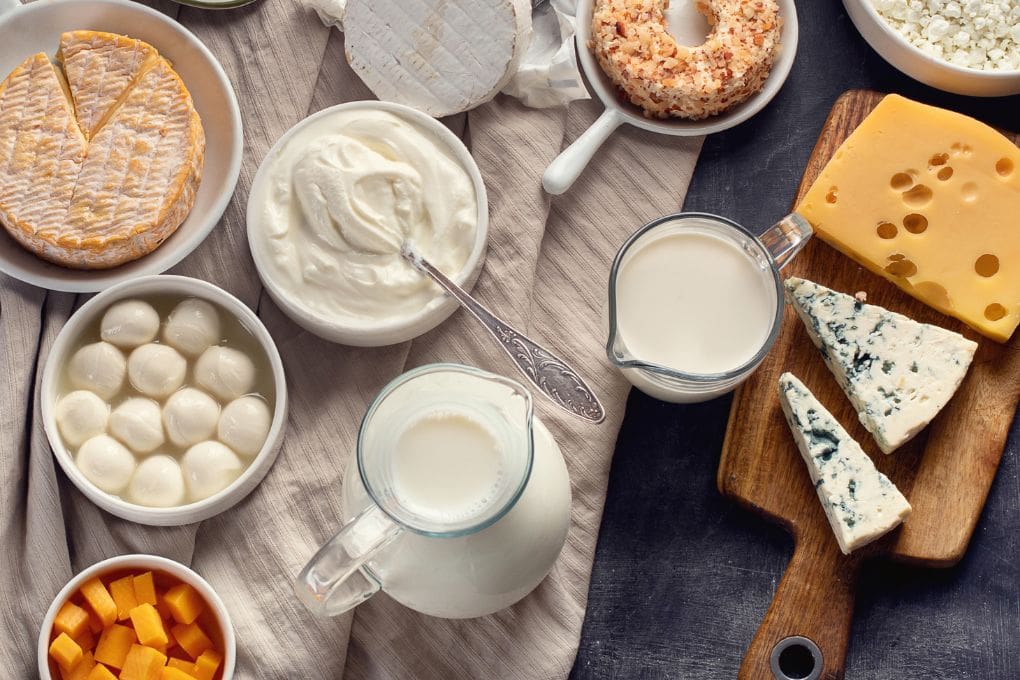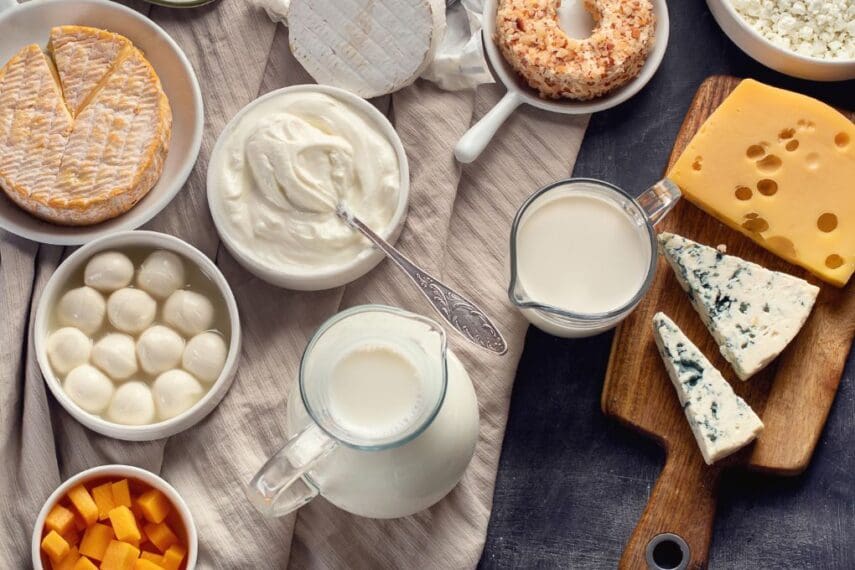
For years, the Dietary Guidelines for Americans have recommended including dairy–particularly low-fat or non-fat options–into a well-balanced dietary pattern. The guidelines suggest limiting total fat and saturated fat due to potential impacts on cardiovascular health. However, emerging research has pointed to some potentially beneficial health associations involving milk fat.
The many nourishing properties of dairy–including the fat–may have something to do with these associations. Since people eat foods and not single nutrients, the relationship between a food’s various components may impact health. Known as the dairy (or food) matrix, this relationship may explain why consuming whole fat dairy products has not been linked to an increased risk of cardiovascular disease, and in some cases may be linked to lower risk.
Extensively analyzing the topic of milk fats (also known as lipids) is Chris Blesso, PhD. A researcher and associate professor of the Department of Nutritional Sciences at the University of Connecticut, he and others have investigated specific types of milk fats and uncovered some surprising finds.
In the first of a two-part Q&A series with Blesso, he discusses the science behind milk lipids and his role in making sure these fats get the increased attention they deserve.
Q: How did milk fats first get on your radar?
Blesso: The subject of my [PhD] dissertation was on egg lipids. I started to get more interested in other types of lipids that were relatively understudied, including sphingolipids. These are in eggs and dairy products.
Milk that contains fat will need to find a way [for the fat] to mix into milk’s fluid, or aqueous, phase. In dairy products, you have a membrane called the milk fat globule membrane. It allows fat globules to disperse into the milk’s fluid. In that membrane, there are proteins and lipids. My lab has been interested in milk’s polar lipids–known as phospholipids and sphingolipids–found in that membrane. These are lipids that have two faces to them: one face that can interact with water and another face that can interact with fat, which allows these lipids to mix the fat globules with water in milk. They also interact with cholesterol, which is also found in the milk fat globule membrane and can have some effects on how we actually absorb cholesterol from dairy products.
There was not a lot of research on dietary sphingolipids. Because the research was limited, it provided a lot of opportunity to look into them. There was some initial evidence that sphingolipids could play a role in digestion and absorption of other lipids. Looking into different food sources, dairy sphingolipids were really interesting because some of the structural differences between dairy sphingolipids led to some enhanced [health] benefits. Through additional studies in my research lab, I obtained more evidence that the sphingolipids in milk can do some potentially interesting things in the body.
What were some of these interesting findings?
When we talk about the food matrix, which more people are paying attention to these days, these milk polar lipids are a contributor to the food matrix effects of dairy. We’re trying to identify why certain foods have certain health effects, and if we’re not understanding all the components involved in the food matrix, we’re not going to get the full picture.
I do a lot of animal studies. Heart disease in mice, for example. [In one study], the milk fat fed to mice–called anhydrous milk fat–was devoid of all polar lipids. We used anhydrous milk fat as a control group and the other group received some of the fat coming from the milk polar lipids. When we introduced these polar lipids, it changed the outcome. Heart disease was cut in half when compared with the control group.
When we eat dairy products, we’re not only eating pure milk fat. If it contains milk fat, it’ll be encompassed in that milk fat globule membrane, which will have those polar lipids. This demonstrates that [these lipids] could be a major component of this food matrix effect. We need to do more studies in humans to confirm that we’re having similar effects as we’re seeing in our mouse models.
Is a human study in the works?
Yes. We’re trying to confirm what we’ve seen in our mouse models/pre-clinical studies. We’re conducting a study right now looking at people with abdominal obesity and moderately elevated cholesterol levels and seeing if inclusion of more milk polar lipids in the diet can affect inflammation, the gut microbiome, and lipoprotein metabolism. [Lipoproteins are particles that transport cholesterol and other lipid molecules throughout the body.] That’ll be the first major step in our research: confirm what we’ve seen in our pre-clinical studies. In preclinical trials in our lab, I also want to look more into how milk polar lipids are impacting the microbiome.
Dr. Marie-Caroline Michalski, a researcher in Europe, has already done some human studies confirming what our lab has found in mouse studies, including [beneficial] impacts on cholesterol absorption, lowering cholesterol, and changes to the microbiome.
All that being said, milk polar lipids offer promising potential and should not be ignored.
Check back soon for the second part of Blesso’s interview, in which he discusses milk fat’s potential impact on other areas of health and his opinions on the current dietary guidelines involving dairy.
Interview conducted, edited, and condensed by Fred Durso, Jr., MS, RDN.



